Introduction to Sales Methodologies

What is a Sales Methodology
A sales methodology is a structured framework that defines the approach a sales team uses to engage with prospects and customers, guiding them through the sales process from initial contact to closing a deal. It involves a set of principles, practices, and rules that sales professionals follow to enhance their ability to close deals and build effective relationships with customers.
Core Elements of a Sales Methodology
1. Structured Sales Process
Every effective sales methodology relies on a clearly defined sales process that outlines the steps from prospecting to closing. This process is typically broken down into stages such as lead generation, qualification, presentation, objection handling, and closing.
- For instance, in the SPIN Selling methodology, the focus is on four types of questions—Situation, Problem, Implication, Need-payoff—which guide the sales conversation and help uncover the prospect's true needs.
Customer Engagement Techniques
Successful sales methodologies emphasize customer interaction strategies tailored to the buyer's journey. This includes understanding the customer's business, their pain points, and their decision-making process.
- Studies show that sales teams that align their selling techniques with the customer decision-making process can increase their closing rates by up to 30% compared to those that do not.
Training and Reinforcement
Ongoing training programs are crucial for equipping sales reps with the necessary skills to implement a sales methodology effectively. This training often includes role-playing scenarios, real-world case studies, and continuous learning modules.
- According to recent data, companies that invest in comprehensive sales training programs see an average of 10% higher win rates on their sales opportunities.
Performance Metrics and Adaptation
Measuring the effectiveness of a sales methodology is key to its success. Key performance indicators (KPIs) such as sales cycle length, conversion rates, and average deal size help in understanding what works and what needs improvement.
- Regular assessments can lead to adjustments in the sales approach, ensuring that the methodology evolves with market conditions and customer expectations.
Why Should You Adopt a Sales Methodology

Adopting a sales methodology is crucial for sales teams aiming to enhance their effectiveness and efficiency in the complex landscape of modern sales.
A well-defined sales methodology not only streamlines the sales process but also aligns sales efforts with the customer's buying journey, leading to improved sales outcomes.
Benefits of Adopting a Sales Methodology
1. Increased Sales Performance
Implementing a structured approach like the SPIN Selling or Challenger Sales methodology provides sales teams with a clear roadmap to follow, which can significantly improve their ability to close deals.
Research indicates that organizations that adopt a structured sales methodology see up to a 20% increase in sales performance compared to those that do not.
2. Enhanced Customer Alignment
By understanding and integrating the customer's decision-making process and pain points into the sales strategy, methodologies such as solution selling and customer centric selling ensure that sales efforts are more relevant and effective.
Surveys have shown that sales strategies aligned with customer expectations can boost customer retention rates by 25%.
3. Consistency and Scalability
A standardized sales approach allows for consistency across the sales team, which is crucial as teams scale. It ensures that all team members are using the same tactics and techniques, which simplifies training and onboarding of new reps.
Companies with consistent sales processes are 33% more likely to be high performers, with win rates exceeding 50% of forecasted sales.
4. Better Forecasting and Reporting
With a clear methodology in place, tracking metrics such as conversion rates, cycle times, and deal sizes becomes easier and more accurate, leading to better forecasting and strategic decision-making.
Data-driven sales teams that employ rigorous methodologies and analytics are 6 times more likely to be profitable than those that don’t.
5. Competitive Advantage
Sales methodologies that include advanced selling strategies like consultative selling or the Sandler Selling System equip sales teams with the skills to differentiate themselves in a crowded market, offering a significant competitive advantage.
A targeted, methodology-driven sales approach can shorten the sales cycle by up to 14%, giving companies a faster time-to-market and edge over competitors.
11 Best Sales Methodologies You Should Know for Sales Success

Here's a list of 11 effective sales methodologies that can help accelerate sales success. Each methodology has its unique focus and approach, making them adaptable to various selling environments and buyer types:
1. SPIN Selling
SPIN Selling is a sales methodology developed by Neil Rackham based on extensive research and analysis of sales calls. The acronym SPIN stands for Situation, Problem, Implication, and Need-Payoff, which are the four types of questions sales reps use to guide the conversation with potential customers.
This method is especially effective in complex, high-value B2B environments where the decision-making process is intricate and involves multiple stakeholders.
Key Steps:
- Situation Questions: These are introductory questions aimed at understanding the current context and background of the potential client’s situation. For example, "Can you describe how your team currently handles data management?"
- Problem Questions: Sales reps identify difficulties or dissatisfactions the client faces that the rep’s product or service could resolve. For instance, "What challenges are you experiencing with your current data management system?"
- Implication Questions: These questions help the customer understand the consequences of their problems, amplifying the urgency or pain points. An example might be, "How do these challenges affect your overall productivity?"
- Need-Payoff Questions: These encourage clients to consider the benefits and value of finding a solution, essentially leading them to articulate the 'payoff' of solving their problem. For example, "How would improving your data management system impact your operation costs?"
Example:
Imagine a company that provides sophisticated CRM systems approaching a potential client who is currently using an outdated method for managing customer relationships. The sales rep might use SPIN questions to first understand the current methods (Situation), identify any inefficiencies or limitations the client is experiencing (Problem), explore how these are hindering their business growth (Implication), and guide the client towards seeing the benefits of a more advanced CRM system (Need-Payoff).
2. The Challenger Sale
The Challenger Sale, based on research by Matthew Dixon and Brent Adamson, challenges the traditional notion of solution selling by advocating a teaching approach where sales reps actively teach their clients about business problems, insights, and solutions.
This methodology is characterized by its approach of tailoring the sales process to the specific needs of the customer and taking control of the sale interaction to steer the conversation.
Key Components:
- Teach: Challengers use their deep understanding of their customer’s business to educate them about new perspectives and insights that reframe the way customers think about their business and solutions.
- Tailor: The sales approach is customized to resonate with different stakeholders, showing an understanding of their unique challenges and goals.
- Take Control: Challengers are comfortable discussing money and are not afraid to push the customer, respectfully, to make decisions more quickly.
Example
Consider a sales rep selling advanced analytics software to a retail chain. The rep, adopting the Challenger approach, might begin by teaching the client about the latest trends in retail analytics and how they are transforming operations in their industry. They could tailor this insight by explaining how different departments (marketing, supply chain, etc.) can specifically benefit from these analytics. Finally, the rep takes control by confidently addressing budget concerns and guiding the decision-makers towards a timely commitment.
3. Solution Selling
Solution Selling is a sales methodology developed by Michael Bosworth in the 1980s. It is a process-oriented approach that focuses on identifying and solving customer problems through tailored solutions. Unlike product-focused selling, Solution Selling centers around creating value for the customer by addressing their specific needs and challenges.
This method is particularly effective in complex sales environments where customers are looking for more than just a product—they are seeking a comprehensive solution that will improve their operations or solve a significant problem.
Key Steps:
- Identify Pain Points: The first step involves understanding the customer's pain points through in-depth questioning. The goal is to uncover the underlying issues they are facing which might not be immediately apparent.
- Develop Needs: Once the pain points are identified, the salesperson works with the customer to develop these into clearly defined needs. This involves helping the customer see the impact of these issues on their business.
- Propose Solutions: The salesperson proposes solutions that specifically address the identified needs. These solutions are often customized and emphasize how they will solve the customer's problems and add value.
- Proof of Concept and Closure: This stage involves demonstrating how the solution works, often through a proof of concept or pilot project, followed by effectively closing the sale.
Example
A sales representative from a company that sells enterprise-level IT security solutions may encounter a client concerned about recent data breaches in their industry. The rep uses Solution Selling to pinpoint specific vulnerabilities in the client’s current IT security system and then illustrates how their solution can mitigate these risks, potentially offering a customized integration that aligns with the client's existing technology stack.
4. Sandler Selling System
The Sandler Selling System, developed by David Sandler in the 1960s, is a non-traditional selling method that emphasizes a balanced conversation between the salesperson and the prospect. Sandler sales methodology is based on the principle of mutual respect where the salesperson acts as a trusted advisor rather than merely a vendor.
The approach is characterized by its upfront, no-pressure style, focusing on qualification rather than closing. It is particularly effective in building long-term relationships and winning high-value accounts.
Key Components:
- Bonding and Building Rapport: Establishing a good rapport with the prospect to create a comfortable environment for an open exchange of information.
- Up-Front Contracts: Setting clear expectations at the beginning of each interaction about what will be discussed and what the outcome of the meeting should be.
- Pain Discovery: Using a consultative approach to uncover the true problems the prospect is facing, often delving deeper than surface-level symptoms.
- Budget and Decision: Ensuring that the prospect has the budget and authority to make the purchase and understanding their decision-making process.
- Fulfillment and Post-Sell: Presenting the solution in a way that aligns with the identified needs and managing any post-sale issues to ensure satisfaction.
Example
A Sandler-trained salesperson at a software company dealing with supply chain management solutions meets with a prospective client. They start by building rapport and setting an up-front contract to discuss the client’s current supply chain inefficiencies. As they uncover the pain points related to supply chain disruptions, they engage the client in defining their ideal outcome and budget constraints. Instead of pushing a hard sell, the salesperson provides detailed information that aligns with what the client needs, ensuring the client feels they have made the decision themselves.
5. Conceptual Selling
Conceptual Selling is a customer-centric sales methodology developed by Robert Miller and Stephen Heiman. It emphasizes understanding the customer’s concept of a product or solution before making a sales pitch.
The methodology is built around the idea that every customer interaction should lead to mutual understanding and agreement on what the sales call will achieve. The focus is on listening and questioning skills to uncover the customer’s key issues, decision criteria, and decision process.
Key Steps:
- Preparation: Before any customer interaction, the salesperson needs to prepare by identifying the information needed from the meeting and setting objectives that align with the customer's potential needs.
- Customer Interaction: Using strategic questioning, the salesperson identifies the customer's needs, confirms their understanding, and aligns their solution accordingly. The questions are categorized into three types: Confirmation questions (to confirm understanding), New Information questions (to explore deeper), and Attitude questions (to gauge customer’s feelings).
- Sales Call Outcome: The goal of each interaction is to achieve a specific outcome, which could be an agreement to meet again, a request for a proposal, or a decision to buy.
Example
Imagine a company that provides cloud storage solutions. A sales rep using Conceptual Selling might start a conversation with a potential client by exploring the client's current data management systems, their satisfaction with those systems, and what they feel is lacking. Through thoughtful questioning, the rep could guide the client to conceptualize the ideal data management solution, highlighting how their cloud storage options can be tailored to meet those needs.
6. Value Selling Framework
Value Selling Framework is a pragmatic, process-oriented approach focused on quantifying and communicating the value of a solution to the prospect.
This methodology aligns the value of the product or service with the customer’s business objectives, emphasizing return on investment (ROI) and other key business impacts. It’s particularly effective in competitive markets where customers are cost-conscious and need to justify their purchasing decisions based on clear, quantifiable benefits.
Key Steps:
- Identify Value Drivers: Understand what drives value for the customer, which could be increasing efficiency, reducing costs, improving quality, etc.
- Align Solutions to Business Objectives: Connect the features and benefits of your product or service to the customer’s specific business goals and challenges.
- Quantify Value: Use data and case studies to demonstrate how your solution can impact the customer's bottom line. This involves creating a compelling value proposition that speaks directly to the customer’s ROI expectations.
- Facilitate the Buying Decision: Provide the customer with the information and reassurances they need to make a decision, often including testimonials, case studies, and ROI calculations.
Example
A sales rep from a company that sells high-efficiency industrial HVAC systems could employ the Value Selling Framework when speaking to a potential client about their high energy costs. By demonstrating how their HVAC system reduces energy consumption and quantifying the potential annual savings, the rep aligns the product’s benefits directly with the customer’s objective of cost reduction.
7. NEAT Selling
NEAT Selling is a sales methodology developed to streamline the sales process by focusing on four key elements that form the acronym NEAT: Needs, Economic impact, Access to authority, and Timeline.
This methodology is particularly effective in B2B sales environments where understanding the buyer's organizational structure and decision-making process is crucial for closing deals.
Key Steps:
- Needs: Identify the specific needs of the prospect, which are often deeper than the surface-level problems. It's important to dig into both known and unknown needs through strategic questioning.
- Economic Impact: Assess how addressing these needs will impact the prospect's business economically. This involves demonstrating the potential return on investment (ROI) and other financial benefits of your solution.
- Access to Authority: Ensure that you are engaging with the decision-makers or have a strategy to gain access to them. Understanding who has the authority to make purchasing decisions is critical.
- Timeline: Determine the timeline for the buying decision. This includes understanding any urgency factors or deadlines that might influence the speed of the decision-making process.
Example
A sales representative from an enterprise software company might use NEAT Selling when approaching a potential client looking for a new HR management system. By uncovering the client's specific needs (e.g., automation of manual tasks, compliance management), demonstrating the economic benefit of reduced labor costs and penalties, ensuring discussions are held with HR directors or C-suite executives, and aligning with the client's timeline for HR system overhaul, the rep can effectively position their software as the optimal solution.
8. Customer Centric Selling
Customer Centric Selling (CCS) is a sales methodology that emphasizes understanding and responding to the customer's needs and buying process. It is grounded in the philosophy that the best way to sell is by helping customers buy. This approach involves treating the customer as a partner in the sales process, adapting the sales approach to each customer’s unique situation and needs.
Key Steps:
- Engage with Key Players Early: Identify and engage with the decision-makers and influencers within the customer’s organization early in the sales process.
- Diagnose Customer Needs: Through active listening and diagnostic questioning, understand the customer’s business challenges and personal wins.
- Tailor Solutions: Customize the presentation of your products or services to directly address the customer’s specific needs and show how they solve the identified problems.
- Facilitate the Buying Process: Make the buying process as easy as possible for the customer. This includes providing all necessary information and support to help the customer make an informed decision.
Example
Consider a sales rep for a company specializing in cloud-based storage solutions approaching a small business with growing data storage needs. Using CCS, the rep would start by understanding the business's current data management challenges, their future growth plans, and the personal goals of the business owner (such as reducing operational costs). The rep would then tailor the conversation and demonstrations to show how their cloud solutions can scale with the business, ensure data security, and reduce costs, thus aligning their offering with the business owner’s objectives and facilitating a smoother buying decision.
9. Inbound Selling
Inbound Selling is a methodology that aligns with the broader concept of inbound marketing, where the focus is on attracting customers through relevant and helpful content, rather than pushing products or services onto prospects.
This sales approach is based on engaging with leads who have already shown interest in your company through various channels like blogs, social media, or downloading content. It emphasizes personalizing the sales process to the buyer's context, which has been warmed up through initial content engagement.
Key Steps:
- Attract Leads: Utilize content marketing strategies to attract potential buyers. This involves creating valuable content that addresses the common questions and needs of your target audience.
- Engage: Once leads are generated, the engagement process involves understanding the specific needs and interests of the prospects based on their interactions with your content.
- Consult Rather Than Sell: Approach these conversations with the aim of advising and consulting, rather than making a hard sell. This builds trust and positions the salesperson as a knowledgeable advisor.
- Personalize the Closing Process: Tailor the sales approach based on the insights gained from the lead’s engagement with your content, ensuring that the solutions offered are directly aligned with their needs.
Example:
A company specializing in marketing software might use blogs, webinars, and free tools to attract marketers looking to enhance their digital strategies. When these marketers download a guide or attend a webinar, a sales rep can follow up, using the specifics of their engagement to personalize discussions around how their software can address the exact challenges faced by the prospect, such as automating repetitive tasks or providing deeper analytics.
10. Gap Selling
Gap Selling is a methodology focused on identifying the gap between the current state and the desired future state of a prospect's business. Developed by Keenan, it’s based on the idea that salespeople sell change, not products or services.
The process involves understanding what a prospect is trying to achieve, where they currently are, and what is preventing them from reaching their goals. The salesperson’s role is to demonstrate how their product or service can bridge this gap.
Key Steps:
- Identify the Current State: Through detailed questioning, determine the prospect’s current situation, including any pain points or challenges they are facing.
- Define the Desired State: Understand what the prospect hopes to achieve or where they want to be. This often involves higher-level business goals or objectives.
- Uncover the Gap: Analyze the differences between the current state and the desired state, and identify the barriers that are preventing the prospect from achieving their goals.
- Propose a Solution: Show how your product or service can effectively bridge the identified gap, focusing on tangible benefits and ROI.
Example
A sales representative from a company that offers cloud-based project management tools might meet with a client who is struggling with project delivery delays and budget overruns. Through Gap Selling, the rep would uncover that these issues stem from poor communication and tracking processes. By demonstrating how their tool improves communication and tracking, the rep can align their offering directly with the client's need to streamline operations and improve project outcomes.
11. Consultative Selling
Consultative Selling is a sales methodology that focuses on building a relationship with the customer through expert advice and open dialogue to identify and solve their needs. This approach emphasizes understanding the customer's business, challenges, and goals to tailor solutions that fit perfectly with their requirements.
The process involves deep listening, asking insightful questions, and genuinely caring about the customer’s problems. Salespeople using this methodology position themselves as trusted advisors rather than just vendors.
Key Steps:
- Understand the Customer: Engage in detailed discussions to gather insights about the customer's business, their specific needs, challenges, and long-term objectives.
- Build Trust: Establish credibility through expertise, consistency, and by prioritizing the customer’s interests above immediate sales goals.
- Explore Solutions Together: Collaborate with the customer to explore various solutions, guiding them through the options and explaining how each can address their challenges.
- Advise on Best Options: Based on the understanding developed, recommend solutions that best meet the customer's needs, emphasizing how these can help achieve their business goals.
Example
A consultant from a marketing automation company might engage with a client who is looking to increase lead generation and conversion rates but isn't sure where to start. Through Consultative Selling, the consultant would delve into the client's current marketing strategies, target audience, and sales funnel dynamics. By understanding these elements, the consultant can recommend specific features of their automation platform that enhance lead nurturing and scoring processes, thus helping the client to efficiently convert more leads into paying customers.
How to Implement a Sales Methodology

Implementing a sales methodology effectively within your organization involves several strategic steps. It requires not only a selection of the right methodology that aligns with your business needs but also careful planning and execution to ensure it integrates smoothly into your existing sales processes.
Here’s a step-by-step guide to implementing a sales methodology
Step 1: Assess Your Current Sales Process
- Evaluate Current Performance: Begin by assessing your existing sales process. Identify strengths, weaknesses, and areas for improvement. Understanding the current state of your sales cycle, the challenges faced by your sales reps, and the needs of your sales teams are crucial for aligning a new methodology with organizational goals.
- Data Analysis: Use data from your sales performance, customer feedback, and sales cycles to pinpoint inefficiencies or gaps in your current approach.
Step 2: Choose the Appropriate Sales Methodology
- Research Different Sales Methodologies: Explore various methodologies like SPIN Selling, Challenger Sales, Solution Selling, and Sandler Selling System to find one that matches your business model, sales team structure, and target market.
- Consult Stakeholders: Engage with sales leaders, sales managers, and frontline sales reps to gather input on which methodology might best address the identified needs and fit the organizational culture.
Step 3: Tailor the Methodology to Fit Your Needs
- Customization: Adapt the chosen sales methodology to the specific contexts of your sales targets and customer interactions. This might involve tweaking the stages of the sales process or emphasizing certain techniques more than others.
- Develop Supporting Tools: Create resources such as sales scripts, demonstration guidelines, and qualification criteria specific to the adopted methodology to support your sales reps.
Step 4: Train Your Sales Team
- Comprehensive Training Sessions: Organize training workshops that cover the core principles of the chosen methodology, its benefits, and detailed instructions on its application. Use real-life scenarios and role-playing exercises to enhance understanding.
- Ongoing Support and Learning: Implement continuous learning sessions and refresher courses to keep the methodology top of mind and integrate new insights or adjustments.
Step 5: Implement the Methodology
- Pilot Program: Start with a pilot program in a controlled environment or segment of your sales team to test the effectiveness of the methodology. This approach allows you to make adjustments before a full-scale rollout.
- Feedback Loop: Establish a feedback mechanism where sales reps can report back on their experiences, challenges, and successes using the new methodology.
Step 6: Monitor and Optimize
- Track Key Performance Indicators (KPIs): Monitor metrics such as conversion rates, average deal size, sales cycle length, and customer satisfaction before and after implementation to evaluate the impact of the new sales methodology.
- Iterative Improvements: Use the data collected to continuously refine the methodology. This could involve adjusting sales training, sales strategies, or even aspects of the methodology itself to better suit changing market conditions or sales objectives.
Step 7: Scale and Integrate Across the Organization
- Wider Rollout: Once the methodology proves successful in the pilot phase, gradually roll it out across the entire sales organization. Ensure consistency in training and resources across all teams.
- Integration with Other Departments: Coordinate with marketing, customer service, and product development teams to ensure that the sales methodology aligns with wider company strategies and customer engagement models.
How to Choose the Right Sales Methodology for Your Sales Process

Selecting the right sales methodology is crucial for maximizing your team's effectiveness and increasing your company's revenue.
Begin by understanding the unique aspects of your business, including customer behaviors and market dynamics.
Assess Your Customer Base and Market
- Customer Insights: Analyze data to understand customer needs and buying behavior. For instance, 67% of the buyer’s journey is now done digitally (SiriusDecisions), indicating the importance of choosing methodologies that align with digital engagement.
- Market Trends: Stay informed about industry trends. Markets dominated by a few large players may benefit from account-based selling, which focuses on fewer, larger deals.
Define Your Sales Objectives
- Specific Goals: Whether it’s increasing close rates by 20% or cutting sales cycle length by 30%, having specific targets helps in choosing a methodology that promises tangible results.
- Long-term Vision: Consider where you want your business to be in the next five years. Methodologies should not only meet current needs but also adapt to future growth.
Evaluate Your Sales Team’s Capabilities
- Skill Set Analysis: Understand the strengths and weaknesses of your team. For example, a team with strong interpersonal skills might excel in a relationship-based selling methodology.
- Training and Development: Factor in the cost and time required for training your team on a new methodology. The right choice should offer a good balance between effectiveness and ease of adoption.
Compatibility with Current Processes
- Integration with Technology: Ensure the methodology works well with your existing CRM and sales tools. For instance, methodologies that emphasize detailed customer data are more effective if your CRM can provide and analyze such data.
- Process Assessment: Review your current sales processes to identify gaps and opportunities. A methodology should build on what is already working well.
Trial and Refinement
- Pilot Programs: Implement the chosen methodology in a controlled, small-scale environment. Measure performance against predefined metrics to evaluate success.
- Feedback and Adjustment: Solicit feedback from the sales team and customers to refine the methodology. Continuous improvement based on real data—like conversion improvements of up to 15% seen in pilot projects—can guide the full-scale implementation.
10 Best Tools to Improve Your Sales Methodology
Implementing effective sales tools can significantly enhance a sales methodology by providing your team with the resources they need to streamline processes, improve efficiency, and increase sales success.
Here are ten of the best tools designed to enhance various aspects of a sales methodology:
1. HubSpot Sales Hub
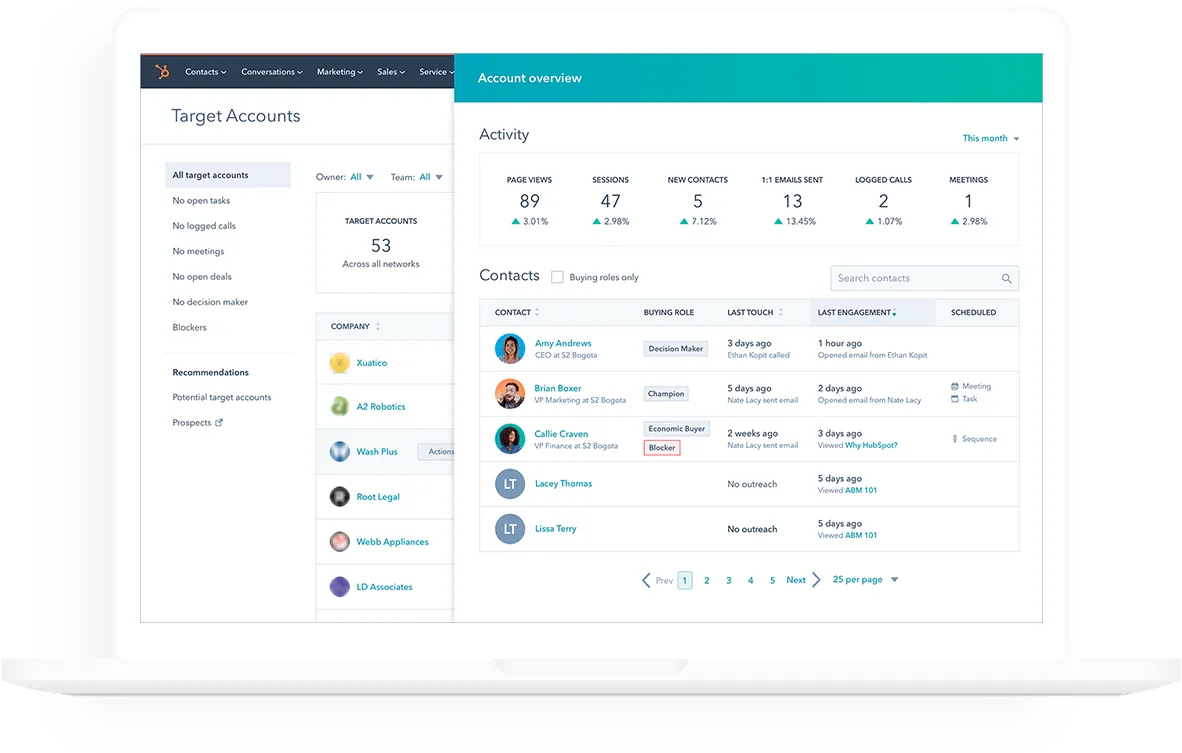
HubSpot Sales Hub offers a comprehensive suite of tools that help automate tasks, manage pipelines, and gain deeper insights into prospects. It's integrated with HubSpot's CRM to ensure seamless data flow and consistency.
Best For: All stages of sales, from lead capture to closing and post-sale follow-up.
2. Salesforce Sales Cloud

Salesforce is one of the most powerful and widely used CRM solutions. It offers extensive customization options, advanced analytics, and automation capabilities to manage all aspects of the sales process.
Best For: Large enterprises looking for scalability and in-depth customer relationship management.
3. LinkedIn Sales Navigator

This tool is tailored for making the most of LinkedIn’s extensive network for sales professionals. It offers advanced search capabilities, lead recommendations, and real-time insights into potential prospects.
Best For: B2B sales professionals aiming to expand their network and reach key decision-makers.
4. Zoho CRM
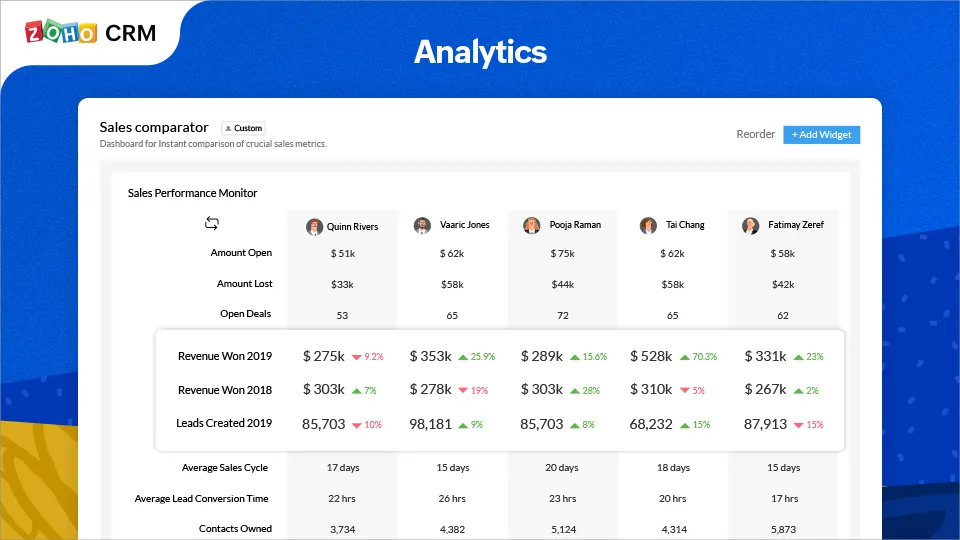
Zoho CRM provides a good balance of functionality and affordability, making it suitable for small to medium-sized businesses. It includes sales signal notifications, automation, and various integrations.
Best For: SMBs needing a versatile, cost-effective CRM solution.
5. Pipedrive

Known for its user-friendly interface and effective sales pipeline management features, Pipedrive helps sales teams plan their sales activities and monitor deals with ease.
Best For: Sales teams that prioritize pipeline management and require a straightforward, intuitive tool.
6. Outreach.io

Outreach excels in sales engagement and efficiency. It automates and sequences communication across multiple channels, helping sales reps to focus on selling rather than admin tasks.
Best For: Teams that engage in heavy outbound communications and need to automate repetitive tasks.
7. Gong.io
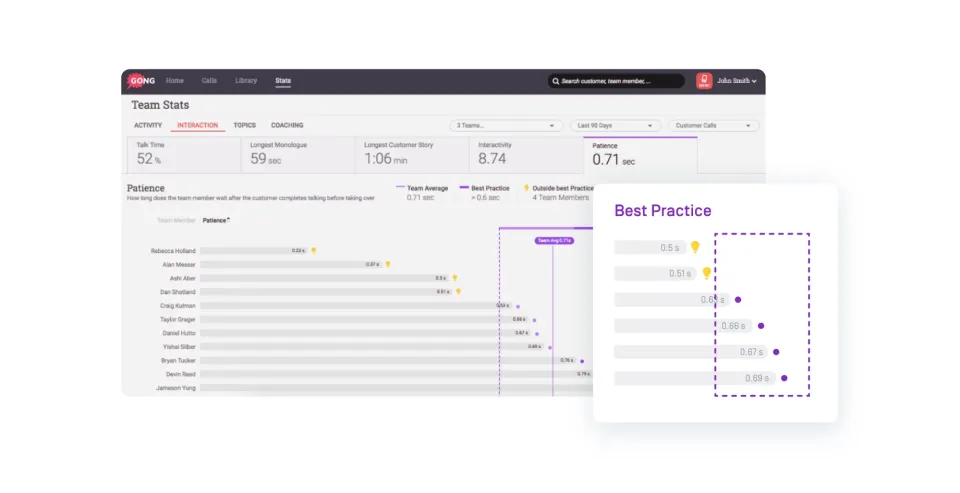
Gong.io uses AI to analyze sales calls, emails, and meetings to provide insights into what strategies are working and which ones aren’t. It’s incredibly valuable for training and improving sales rep performance.
Best For: Sales organizations that want to leverage AI for conversation intelligence and performance enhancement.
8. Chorus.ai

Similar to Gong, Chorus.ai offers conversation intelligence that helps sales teams replicate successful sales calls, understand market reactions, and refine their sales strategies.
Best For: Teams looking to improve their communication tactics and strategies based on successful interactions.
9. DocuSign
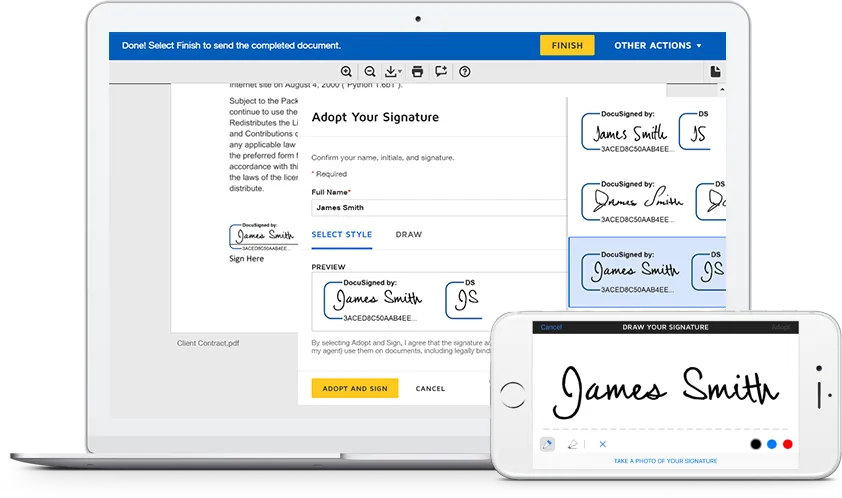
DocuSign streamlines the agreement process with electronic signatures, allowing sales teams to close deals faster and reduce paperwork.
Best For: Any sales organization looking to simplify and accelerate the closing process.
10. Leadfeeder
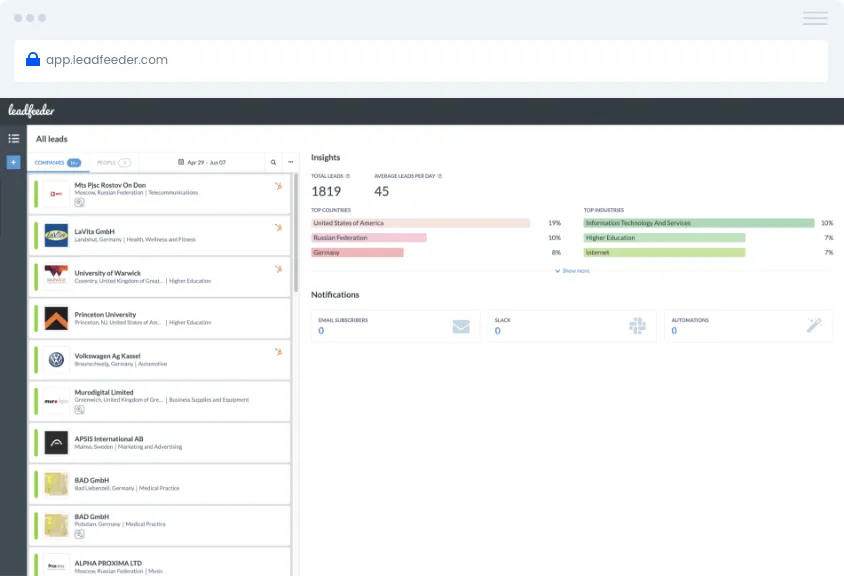
Leadfeeder tracks who visits your website and provides insights into potential leads by linking visitor data with rich company profiles and contact information.
Best For: B2B companies interested in enhancing their lead generation and tracking website engagement.
Choosing the Right Tools
When selecting tools to improve your sales methodology, consider your specific sales cycle, team size, industry, and the complexity of the sales processes. Tools should not only fit seamlessly into your existing workflow but should also offer scalability and integration capabilities to grow with your business needs.
Each of these tools offers unique features that can complement different aspects of a sales methodology, ensuring that your team has the best resources to increase efficiency and drive sales success.
Concluding Thoughts
In conclusion, mastering and implementing a range of sales methodologies is critical for enhancing your team's effectiveness and driving sales success. From SPIN Selling’s precise questioning technique to the Challenger Sale’s disruptive approach, each methodology offers unique advantages tailored to different selling environments and buyer types. Whether you're nurturing complex B2B relationships or engaging in direct B2C sales, the right methodology can significantly sharpen your sales strategy.
Remember, the key to leveraging these methodologies effectively lies in adapting them to the specific needs of your business and continuously training your team to execute them proficiently. With the right approach, these methodologies not only improve sales outcomes but also foster lasting customer relationships and a strong competitive edge in your market. Embrace these strategies with a clear understanding of their principles and a commitment to ongoing refinement, and you'll set your sales team on a path to sustained success.
Further Reading
To deepen your understanding of sales methodologies and refine your sales strategies, explore these additional resources on our blog. These articles provide further insights and practical tips to enhance your sales effectiveness and adaptability in various selling environments:
- Sales Lead Generation: Techniques and Insights: Dive deeper into strategies for generating quality leads that are crucial for implementing any sales methodology effectively. This guide covers innovative techniques to attract and convert leads in competitive markets.
- Understanding Sales in B2B: Key Factors and Strategies: Gain a thorough understanding of the nuances of B2B sales. This article explores essential strategies that align with various sales methodologies to improve engagement and conversion in business-to-business contexts.
- Exploring Different Sales Points: A Comprehensive Guide: Enhance your understanding of crucial sales points within different methodologies. This piece discusses how to identify and leverage these points to maximize sales effectiveness.
- Best Regards vs. Kind Regards – Which to Use When?: Learn about the subtleties of professional email sign-offs and their implications on your sales communications. This comparison will help you choose the appropriate sign-off to maintain professionalism and warmth in your emails.
- Politely Asking for an Update in an Email: Discover effective techniques for requesting updates in emails. This article provides practical advice on how to communicate follow-up requests without seeming pushy, an essential skill in maintaining momentum in sales processes.
These resources are tailored to complement your sales methodology knowledge and enhance your skills across different aspects of the sales process, ensuring comprehensive growth and development in your sales career.









